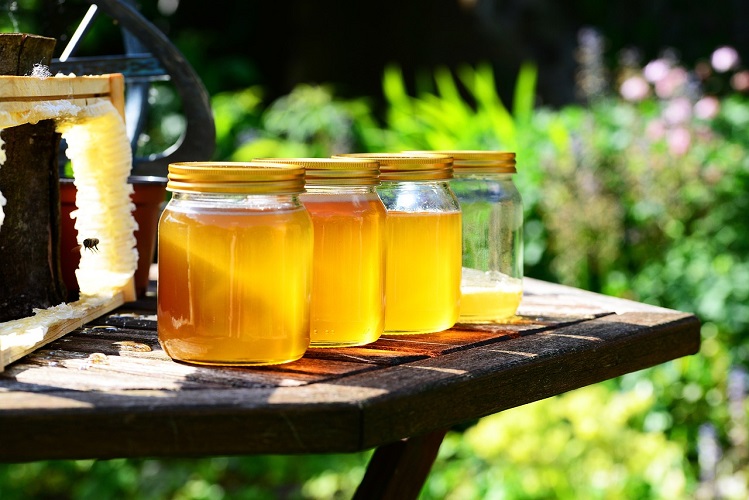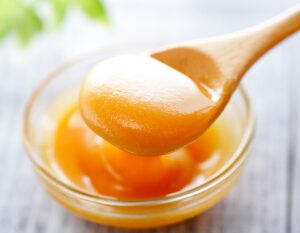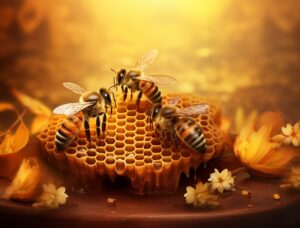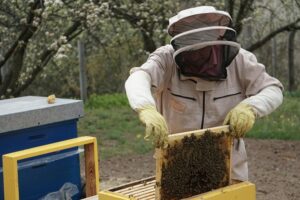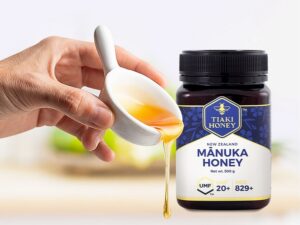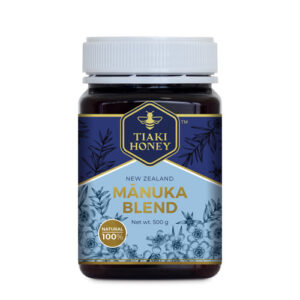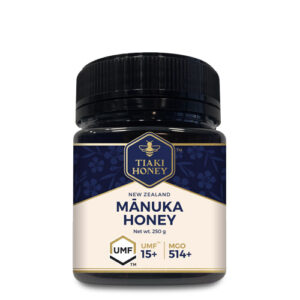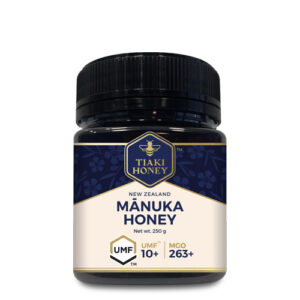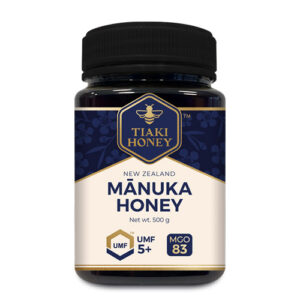Manka Honey vs. Ordinary Honey: How Do They Compare in Taste and Nutritional Value?
Honey has been used for thousands of years as a natural sweetener and for its health benefits. It is known to be rich in antioxidants and has antibacterial and anti-inflammatory properties.
There are many different types of honey available on the market, including Manuka, Acacia, Clover, and Wildflower.
In this article, we will focus on Manuka Honey and how it compares in taste and nutritional value to other honey varieties.
What is Manuka Honey?
Manuka Honey is a type of honey produced in New Zealand from the nectar of the Manuka tree.
It is known for its unique taste and health benefits, thanks to the presence of a compound called methylglyoxal (MGO) that is found only in Manuka Honey.
Manka Honey is produced using a specific method that involves collecting the honey from the hives and then testing it for its MGO content.
Comparison of Nutritional Values
Honey is known for its many nutritional benefits, including its high content of antioxidants and enzymes that aid digestion.
Manuka Honey, in particular, is known to have high levels of MGO, which has antibacterial properties that can help improve immunity and fight infections.
When compared to other honey varieties, Manka Honey has been found to have higher levels of antioxidants and antibacterial activity.
How Does Manuka Honey Compare to Other Popular Honey Varieties?
Manuka Honey is known for its unique taste and health benefits, but how does it compare to other popular honey varieties? Let’s take a look.
Acacia Honey
Acacia honey is known for its mild and delicate flavor. It has a light color and a clear appearance. In terms of nutritional value, it is high in fructose and low in glucose, making it a good option for people with diabetes.
When compared to Manka Honey, Acacia Honey has lower levels of antioxidants and antibacterial activity.
Clover Honey
Clover honey is one of the most common types of honey found in grocery stores. It has a sweet, mild flavor and a light color. It is also known for its medicinal properties and is often used to soothe sore throats and coughs.
In terms of nutritional value, Clover Honey is high in antioxidants and has antibacterial properties. However, when compared to Manka Honey, it has lower levels of MGO, the compound responsible for its antibacterial activity.
Multiflora Honey
Wildflower honey is produced from the nectar of various flowers and has a dark color and a strong, robust flavor. It is known for its medicinal properties and is often used to treat allergies and boost immunity.
Wildflower Honey is high in antioxidants and has antibacterial properties. When compared to Manka Honey, it has lower levels of MGO.
The Different Factors That Influence Honey Taste
Honey taste can vary depending on several factors, including:
Type of Flower
The type of flower the bees collect nectar from can have a significant impact on the taste of honey. Each flower has a unique flavor profile, and the bees’ choice of flower can affect the taste of the honey.
Weather Conditions
Weather conditions during honey production can also affect the taste of honey. Too much rain or too little can impact the nectar flow, which can alter the taste of the honey. Additionally, temperature and humidity can also impact the fermentation process, which can affect the taste of honey.
Nutritional Value Comparison
Honey is a natural sweetener that has been used for centuries for its medicinal and nutritional properties. Let’s take a closer look at the nutritional components of honey, compare the nutritional value of Manuka Honey to other popular honey varieties, and explore the impact of processing on the nutritional value of honey.
Honey contains several nutritional components, including:
Carbohydrates
Honey is primarily made up of carbohydrates, including glucose and fructose. These simple sugars are quickly absorbed by the body and provide a source of energy.
Antioxidants
Honey contains several antioxidants, including flavonoids and phenolic acids. These compounds help protect the body against oxidative stress and may help reduce the risk of chronic diseases.
Vitamins and minerals
Honey contains small amounts of vitamins and minerals, including vitamin C, calcium, and iron.
Comparison of Nutritional Value Between Manuka Honey and Other Popular Honey Varieties
Manuka Honey is known for its high nutritional value, but how does it compare to other popular honey varieties? Here’s a comparison:
Acacia Honey
Acacia honey is low in glucose and high in fructose, making it a good option for people with diabetes. However, it has lower levels of antioxidants and antibacterial activity when compared to Manka Honey.
Clover Honey
Clover honey is high in antioxidants and has antibacterial properties. However, it has lower levels of MGO, the compound responsible for its antibacterial activity, when compared to Manka Honey.
Multiflora Honey
Multiflora honey is high in antioxidants and has antibacterial properties. However, it also has lower levels of MGO when compared to Manuka Honey.
Overall, Manuka Honey has higher levels of antioxidants and antibacterial activity when compared to other popular honey varieties.
The Impact of Processing on the Nutritional Value of Honey
The processing method can impact the nutritional value of honey. Raw honey tends to retain more of its nutritional components, including antioxidants and enzymes, as it is not heated or filtered. Processed honey, on the other hand, is heated and filtered, which can reduce its nutritional value.
Manuka Honey Production Process
Have you ever wondered how Manuka Honey is produced? Here’s a breakdown of the production process, from harvesting to packaging.
Harvesting Manuka Honey
Manuka Honey is harvested from the hives of Manka bees, which are indigenous to the Manuka Forest in New Zealand. The harvesting process begins when the honeycombs are full of mature honey. The beekeeper will use a smoker to calm the bees and remove the honeycombs from the hive.
Extracting Manuka Honey
Once the honeycombs have been removed from the hive, the next step is to extract the honey. The honeycombs are placed in a honey extractor, which uses centrifugal force to separate the honey from the comb. The honey is then collected in a container and strained to remove any remaining wax particles.
Filtering and Packaging of Manuka Honey
After the honey has been extracted and strained, it is ready for filtering and packaging. The honey is filtered to remove any remaining impurities and to ensure a smooth texture. It is then packaged in glass jars or plastic containers.
During the packaging process, the honey may be heated to a temperature of no more than 120°F (49°C) to make it easier to pour and to prevent crystallization. However, the honey should not be pasteurized or exposed to high temperatures, as this can destroy its natural enzymes and nutritional components
Differences Between Raw and Processed Honey
When shopping for honey, you may come across both raw and processed varieties. But what’s the difference between the two, and which one is better for you? Let’s take a closer look.
Raw Honey Definition
Raw honey is honey that has not been heated or filtered. This means that it retains all of its natural enzymes, antioxidants, and nutritional components. Raw honey may also contain small amounts of pollen and beeswax, which can provide additional health benefits.
Benefits of Raw Honey
Raw honey has several potential health benefits, including:
Antioxidant Properties
Raw honey contains several antioxidants, including flavonoids and phenolic acids, which can help protect the body against oxidative stress and reduce the risk of chronic diseases.
Antibacterial Properties
Raw honey has natural antibacterial properties, which can help fight off harmful bacteria and promote wound healing.
Soothing Properties
Raw honey can be used to soothe sore throats, coughs, and other respiratory symptoms.
Processed Honey Definition
Processed honey is honey that has been heated and filtered to remove impurities and create a smooth texture. This process can also remove some of the natural enzymes, antioxidants, and nutritional components found in raw honey.
How Processing Affects the Nutritional Value of Honey
Heating and filtering honey can affect its nutritional value. Processing can destroy some of the natural enzymes, antioxidants, and nutritional components found in raw honey. In addition, some processed honey may contain added sugars or other additives.
How to Choose the Best Honey
When it comes to selecting honey, there are several factors to consider to ensure you choose the best option. Here’s what to look for:
Factors to Consider When Selecting Honey
- Flavor: Honey can have a range of flavors, from floral and fruity to nutty and earthy. Consider what flavor profile you’re looking for and choose a honey that matches.
- Color: The color of honey can also vary, ranging from light golden to dark amber. Darker honey is typically stronger in flavor and may contain more antioxidants.
- Texture: Honey can be thick and creamy or thin and runny. Consider the texture you prefer and choose a honey that matches.
- Origin: Some types of honey, such as Manuka honey, are known for their unique health benefits. Consider where the honey comes from and whether it offers any specific health benefits.
What to Look for on the Label When Purchasing Honey
When shopping for honey, look for the following information on the label:
- Type of honey: The label should specify the type of honey, such as Manuka honey, clover honey, or wildflower honey.
- Source: The label should indicate where the honey was sourced from, whether it’s a specific region or a particular type of flower.
- Grade: Honey is typically graded based on factors such as color, flavor, and moisture content. Look for honey with a high grade for the best quality
Manuka Honey UMF Grading System
UMF grading is a system used to grade the quality of Manuka honey, which is known for its unique health benefits. UMF stands for Unique Manuka Factor, which is a measure of the concentration of certain compounds found in Manuka honey that contribute to its antibacterial properties.
The UMF grading system rates Manuka honey on a scale of 5 to 20, with higher numbers indicating a higher concentration of the antibacterial compounds. To be considered genuine Manuka honey, it must have a UMF rating of at least 5. A UMF rating of 10 or higher is considered high-quality Manuka honey, while a rating of 20 is considered extremely high quality.
It’s important to note that UMF grading is just one way to assess the quality of Manuka honey. Other factors, such as the honey’s origin, processing methods, and potential contaminants, should also be considered when selecting a high-quality Manuka honey.
See how Manuka honey stands apart from the ordinary. Discover the difference with UMF™ Manuka Honey!
